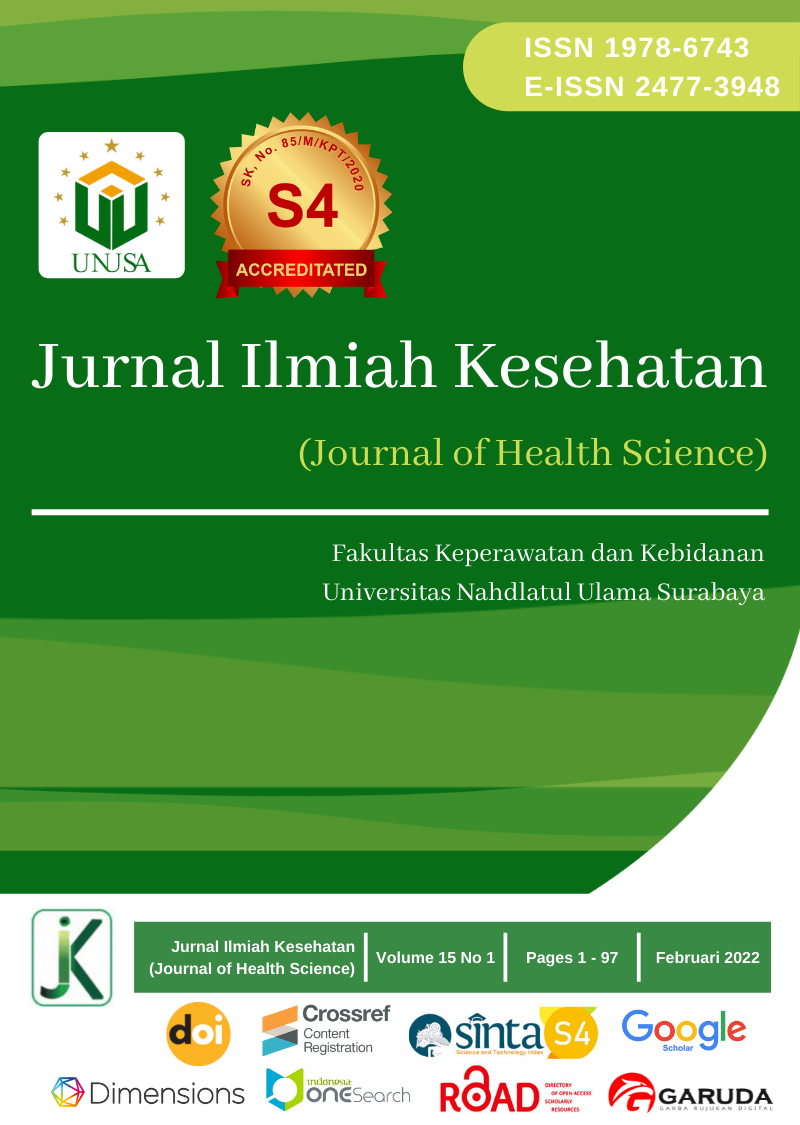A Rare Case of Spontaneous Uterine Rupture in Second Trimester Pregnancy with Bicornuate Uterus: A Case Report
Main Article Content
Abstract
Eighteen weeks gestation of 34 years-old-woman with abdominal pain in the last 12 hours because
of uterine rupture. Abdominal pregnancy was found with 2D ultrasound. On laparotomy
exploration, bicornuate uterus was found with uterine rupture and an unviable fetus. Supravaginal
hysterectomy was performed to control haemorrhage. Uterine anomaly is rare. However, the
complications that occur will be an obstetric emergency. Screening uterine anomalies at premarital
or early antenatal care is needed for predicting the risk of maternal mortality.
Downloads
Article Details
Copyright (c) 2022 eighty mardiyan kurniawati, Fadhilah Mega Indriati, Cholid Rochman Riskianto

This work is licensed under a Creative Commons Attribution-ShareAlike 4.0 International License.
References
Rac MW, Revell PA, Eppes CS. Syphilis during pregnancy: a preventable threat to maternal-fetal health. Am J Obstet Gynecol 2017;216:352–63.
Gomez GB, Kamb ML, Newman LM, Mark J, Broutet N, Hawkes SJ. Untreated maternal syphilis and adverse outcomes of pregnancy: a systematic review and me- ta-analysis. Bull World Health Organ 2013;91:217–26.
Public Health England. NHS Infectious Diseases in Pregnancy Screening programme handbook 2016 to 2017. London: Public Health England; 2016 [https://assets.publishing.service.gov.uk/government/uploads/system/uploads/attachment_d ata/file/542492/NHS_IDPS_Programme_Handbook_2016_to_2017.pdf].
Guidance. Infectious diseases in pregnancy screening (IDPS) programme overview [https://www.gov.uk/guidance/infectious-diseases-in-pregnancy-screening-programme- overview].
Public Health England. Syphilis epidemiology in London. Sustained high numbers of cases in men who have sex with men. London: Public Health England; 2016 [https://assets.publishing.service.gov.uk/government/uploads/system/uploads/attachment_data/fil e/547072/london_syphilis_report.pdf].
HIV-STIs. Recent epidemiology of infectious syphilis and congenital syphilis. Infection reports. Health Protect Rep 2013;7. [https://assets.publishing.service.gov.uk/government/uploads/system/uploads/attachment_d ata/file/336760/hpr4413_sphls.pdf] (publication withdrawn February 2020)
Genç M, Ledger WJ Syphilis in pregnancy Sexually Transmitted Infections 2000;76:73-79.
H. B. Jensen, “Congenital syphilis,” Seminars in Pediatric Infectious Diseases, vol. 10, pp. 183–194, 1999.
D. Watson-Jones, J. Changalucha, B. Gumodoka et al., “Syphilis in pregnancy in Tanzania. I. Impact of maternal syphilis on outcome of pregnancy,” Journal of Infectious Diseases, vol. 186, no. 7, pp. 940–947, 2002.
L. V. Stamm, “Global challenge of antibiotic-resistant Treponema pallidum,” Antimicrobial Agents and Chemotherapy, vol. 54, no. 2, pp. 583–589, 2010.
K. A. Workowski and S. Berman, “Sexually transmitted diseases treatment guidelines,” Morbidity and Mortality Weekly Report, vol. 59, no. RR-12, pp. 1–113, 2010.
G. D. Wendel Jr., J. S. Sheffield, L. M. Hollier, J. B. Hill, P. S. Ramsey, and P. J. Sánchez, “Treatment of syphilis in pregnancy and prevention of congenital syphilis,” Clinical Infectious Diseases, vol. 35, supplement 2, pp. S200–S209, 2002.
Conover C, Rend C, Miller G, et al. Congenital syphilis after treatment of maternal syphilis with a penicillin regimen exceeding CDC guidelines. Infect Dis Obstet Gynecol 1998;6:134–7.
Goh BT, Thornton AC. Antenatal screening for syphilis. Sex Transm Infect. 2007;83(5):345-346. doi:10.1136/sti.2007.026633





